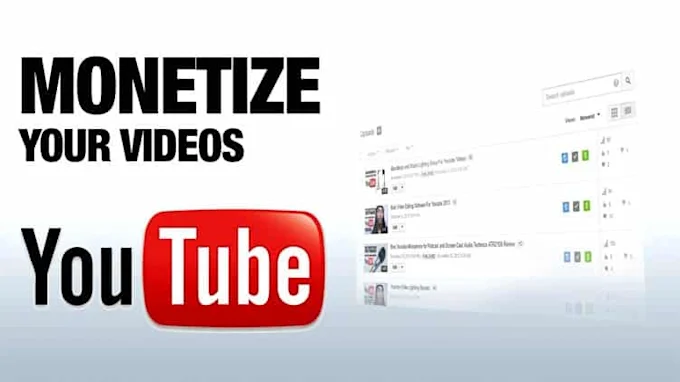YouTube has become one of the largest digital media platforms, offering countless creators the chance to earn money online. While many new YouTubers are excited to start generating revenue from their content, earning eligibility is not automatic. To be approved for the YouTube Partner Program (YPP), creators must follow established YouTube monetization criteria, which ensure that the content being promoted is engaging, safe, and authentic. This article explains these requirements and provides helpful guidance to remain compliant so creators can maintain and grow their earning opportunities.
Understanding YouTube Monetization Criteria
YouTube uses a set of structured requirements to decide whether a creator qualifies for monetization. These criteria help maintain a safe environment for viewers and uphold the reputation of advertisers who rely on YouTube to promote their brands. To begin, a channel must reach at least 1,000 subscribers. Next, the channel must achieve 4,000 valid public watch hours within the past 12 months or receive 10 million valid public Shorts views within 90 days. These thresholds measure audience engagement and verify that the content keeps users watching consistently.
Additionally, creators must have a valid, linked Google AdSense account to receive payments. Beyond these numerical benchmarks, YouTube looks at how well creators follow its major platform policies. These include copyright, advertiser-friendly content, and community guidelines. YouTube may deny or remove monetization if violations are detected.
Why These Requirements Matter
Adhering to YouTube monetization criteria matters for several important reasons. First, they help protect the platform from misuse, such as spam content, harmful messaging, or copyright theft. Second, they ensure that advertisers can confidently place their ads on content without risk to their brand reputation. Third, viewers benefit from safe and meaningful content. For creators, these criteria also help maintain a level playing field, allowing dedicated channels to earn income for their work and ensuring their content is trustworthy and valuable.
Following the rules from the beginning allows channels to build a strong foundation. As a result, creators reduce the risk of demonetization, develop better relationships with their viewers, and become more attractive to potential sponsors.
Detailed Eligibility Requirements
The first point of eligibility is reaching 1,000 subscribers. While challenging, it emphasizes building a loyal community. The required 4,000 public watch hours must come from public videos only; private or unlisted uploads do not count. This requirement means creators need to consistently post videos that keep viewers engaged. Alternatively, creators may qualify by achieving 10 million public Shorts views in the last 90 days, which has become an increasingly popular route due to the rise of short-form video.
AdSense Account
A Google AdSense account is essential for collecting revenue. AdSense manages earnings, provides secure access to payments, and ensures compliance with international regulations. Setting up the account correctly is critical, and creators should confirm their payment details early to avoid issues later.
Major Policy Requirements Community Guidelines
YouTube’s community guidelines protect viewers from harmful or inappropriate material. Content involving hate speech, explicit material, dangerous stunts, or harassment is prohibited. Channels violating these rules may receive warnings or strikes. Multiple strikes can lead to suspension or termination.
Copyright Policies
Copyright is one of the biggest threats to monetization. Using copyrighted music, video clips, or images without permission can result in claims or copyright strikes. Creators must use original or licensed material. A single strike may affect monetization status, so understanding fair use and licensing is important.
Advertiser-Friendly Standards
Even if content is allowed under community guidelines, it must still follow advertiser rules to be fully monetized. Videos containing excessive violence, profanity, or disturbing imagery may receive limited or no ads. Creators should aim for clean, respectful, and family-safe content to maintain full revenue potential. For more guidance, the expert resource https://monetag.com/blog/youtube-monetization-criteria/ outlines how creators can better understand and satisfy monetization conditions.
Stay Compliant with Monetization Rules
Remaining compliant with YouTube monetization criteria requires best practices and consistent effort. First, creators should always produce original content. Reusing existing material without adding commentary, creativity, or value may be flagged as reused content, jeopardizing monetization. Second, avoid copyright issues by using royalty-free music or obtaining proper permissions. Third, always follow community guidelines and avoid controversial subjects that risk violations.
Another critical step is monitoring analytics. YouTube Studio provides insights into watch hours, viewer demographics, and traffic sources. Reviewing these metrics helps creators understand their progress toward monetization and manage content strategy effectively. Organizing playlists, optimizing titles with relevant keywords, and creating compelling thumbnails also improve audience retention and increase eligibility odds.
What Can Cause Demonetization
Even after approval, monetization is not guaranteed forever. Repeated policy violations, copyright issues, or prolonged inactivity may cause a channel to lose revenue access. Creators should remain consistent with policy compliance and continue creating content that aligns with guidelines. Other causes of demonetization include misleading metadata, reused content without transformation, and spam-like behavior. Staying informed about YouTube’s evolving policies helps prevent unexpected penalties.
Best Practices After Monetization
Once accepted into YPP, creators can access multiple revenue streams. These include ad revenue, channel memberships, Super Thanks, and merchandise. Consistent posting encourages audience loyalty and increased earnings. Building community interaction through comments and livestreams also helps. Optimizing metadata remains important, as it helps YouTube recommend videos to new viewers. To stay current with updates and continued compliance, checking expert resources such as https://monetag.com/blog/youtube-monetization-criteria/
is beneficial.
FAQs
How long does approval take?
Most applications are reviewed within a few weeks, though timing varies based on volume.
Are Shorts eligible for monetization?
Yes. Shorts creators can qualify with 10 million valid public views within 90 days.
Can reused content be monetized?
Only if significantly transformed with commentary or original editing.
Do private or unlisted videos count?
No. Only public watch hours count toward eligibility.
Can monetization be revoked?
Yes. Violations or inactivity can cause loss of revenue access.
Conclusion
Meeting YouTube monetization criteria requires attention to detail, commitment to originality, and consistent compliance with platform rules. Creators should focus on building engagement, protecting their content from copyright issues, and maintaining an advertiser-friendly tone. By understanding these requirements and practicing reliable content strategies, creators can secure long-term income opportunities and continue growing on YouTube.


